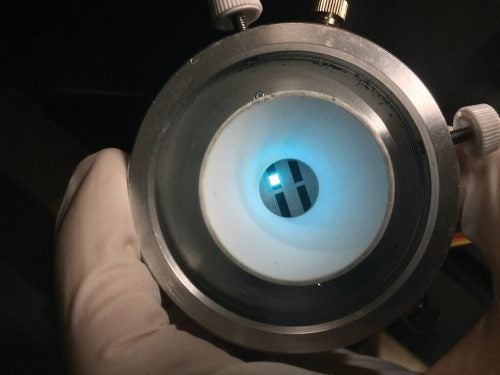Ryan Vallee ’19
A chemistry and physics double major, Ryan Vallee ’19 spent last summer working in the Center for Organic Photonics and Electronics Research lab at Kyushu University in Fukuoka, Japan, where he developed three molecules involved in organic light-emitting diodes (OLEDs). Vallee says the technology is evolving for the next generation of electronics displays, such as phones, watches, and TVs. The goal is to develop light displays that are effective, efficient, and nontoxic, an elusive combination in the industry.
Why does Vallee love chemistry? “It’s mysterious,” he explains. “You never know what’s going to happen.”
His internship at Kyushu affirmed his desire to work hands-on in a lab. Learning the theory behind the research he was doing was monumental. Living and working in Japan was a challenge of almost equal stature—he met the challenges, and he’s ready for more.
Vallee, who is from Cumberland, Rhode Island, considered a pre-med track, or majoring in music. But in the spring semester of his first year at URI, he dropped a psychology course, replacing it with organic chemistry. He was hooked and became a chemistry major without looking back. “I can’t see myself doing anything but science,” he says. “There’s so much to know about how the world works.”
Why does Vallee love chemistry? “It’s mysterious,” he explains. “You never know what’s going to happen. Say you’re doing synthesis and you have to leave the reaction overnight—you can’t see if it works until the next day. I like not knowing what will happen next. It’s all about infinite possibilities. You achieve things by manipulating compounds and seeing what works and what doesn’t. With experiments, even if they don’t succeed, you can still learn a lot about the science you are doing and what paths your research can take.”

In some ways, that’s Vallee’s life philosophy. Wise beyond his years, he’s learned you just have to “put yourself out there, be confident, and take responsibility for your decisions.” The Kyushu internship, in fact, came about after Vallee attended a lecture given by Christopher Savoie ’92 at URI on hyperfluorescence technology. The lecture was on a Friday, late afternoon. Savoie recalls that Vallee stayed after the lecture, “peppering me with insightful questions. I took an immediate liking to him and could see there was something special about him.”
Vallee, who followed up the meeting with an email asking about internship opportunities, says he thinks maybe Savoie “sees himself in me.” Vallee clearly admires Savoie’s career and intellect. “Just talking with Chris is amazing. He’s smart and crazy successful. I want to be like Chris one day,” Vallee humbly discloses. “His interest in my work and my development in this field is just…” he trails off. “He just cares a lot. It’s great to have someone like that helping you.”
Vallee plans to become fluent in Japanese and hopes to return to Japan for grad school—but the possibilities are infinite.
—Barbara Caron
Vallee’s internship at Kyushu University was funded in part by the College of Arts and Sciences Annual Fund, to which Christopher Savoie is an enthusiastic contributor. Savoie, who also interned at Kyushu University when he was a URI undergrad, feels strongly that funding internship experiences is critical, because those internships can be life-changing for the student interns.
